SLS technology is a technology commonly used in high-end manufacturing. Originally proposed by graduate student CR Dechard of the University of Texas, and developed in 1989. With this core technology, he formed DTM and has since become a leading company in SLS technology until 2001 when it was completely acquired by 3D Systems. For decades, researchers at the University of Texas DTM have done a lot of research in the SLS field and have achieved fruitful results in equipment development, process and materials development.
Domestically, a number of units have carried out research work on SLS, such as Huazhong University of Science and Technology, Nanjing University of Aeronautics and Astronautics, Northwestern Polytechnical University, and 3D printing companies in Beijing and Hunan, which have achieved many significant results. I will share with you the SLS technology in the field of 3D printing today.
1 SLS principle
Selective Laser Sintering (SLS) technology was invented by CR Dechard of the University of Texas at Austin. It mainly uses the basic principle of high-temperature sintering of powder materials under laser irradiation, and achieves precise positioning by computer-controlled light source positioning device. Then, the layer is sintered and stacked.
The working process of SLS is similar to that of 3DP, which is based on a powder bed. The difference is that 3DP bonds the powder by spraying the binder, while SLS uses infrared laser to sinter the powder. First, a layer of powder material is laid with a powder roller, and it is heated to a temperature just below the sintering point of the powder by a thermostatic device in the printing device, and then the laser beam is irradiated on the powder layer to make the temperature of the irradiated powder It rises above the melting point, is sintered and is bonded to the formed part below. After the sintering of one layer is completed, the printing platform is lowered by a layer thickness, the powder laying system lays a new powder material on the printing platform, and then the laser beam is controlled to be irradiated again for sintering, so that the cycle is repeated, and the layers are superimposed until the entire three-dimensional is completed. The printing work of the object.
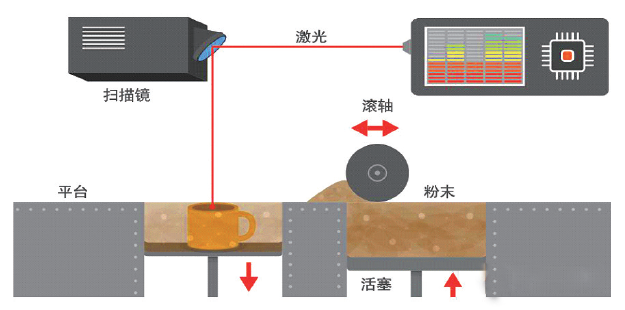
Schematic diagram of SLS laser sintering process (Source: Antarctic Bear)

SLS process principle
Laser sintering technology is one of the most complicated 3D printing technologies with the highest molding conditions and the highest equipment and material cost, but it is also the most far-reaching technology for the development of 3D printing technology. In theory, any powder material that can form interatomic bonds after heating can be used as a molding material for SLS. Currently, materials that have been successfully used in SLS equipment are mainly paraffin, nylon, metal, ceramic powder and Their composite materials.

SLS print internal demo
2 SLS Advantage & Technology Limitations
SLS advantages:
1. A wide range of materials can be used. Materials that can be used include polymers such as nylon and polystyrene, metals such as iron, titanium, and alloys, ceramics, coated sand, and the like;
2. High molding efficiency. Since the SLS technology does not completely melt the powder, but only sinter it, the manufacturing speed is fast;
3. High material utilization. Unsintered materials can be reused with less material waste and lower cost;
4. No support is required. Since the unsintered powder can support the cavity and the cantilever portion of the model, it is not necessary to additionally design the support structure like the FDM and SLA processes, and it is possible to directly produce prototypes and components with complicated shapes;
5. Wide range of applications. Due to the variety of molding materials, different molding materials can be used to make sintered parts for different purposes, which can be used to manufacture prototype design models, mold master molds, precision casting molds, cast shells and cores.
SLS technical restrictions:
1. Raw material prices and procurement and maintenance costs are high.
2. Insufficient mechanical properties. The principle of SLS forming metal parts is that low-melting powder bonds high-melting powder, resulting in high porosity and poor mechanical properties, especially low elongation, which can rarely be directly applied to the manufacture of metal functional parts.
3. A more complex auxiliary process is required. Due to the large difference in materials used in SLS, sometimes complicated auxiliary processes are required, such as long-term pretreatment (heating) of the raw materials, and powder cleaning of the finished surface after completion.
3 SLS application
Sintering of metal powder
There are three main types of metal powders used for SLS sintering: single metal powder, metal mixed powder, metal powder plus organic powder. Accordingly, there are three main ways in which SLS technology can be used to form metal parts:
a. Sintering of a single metal powder
For example, iron powder, the iron powder is preheated to a certain temperature, and then scanned and sintered by a laser beam. The sintered parts are subjected to hot isostatic pressing to achieve a final density of 99.9%.
b. Sintering of metal mixed powder
It is mainly a mixed powder of two metals, one of which has a lower melting point. The other powder has a higher melting point. For example, a mixture of bronze powder and nickel powder. First preheat the metal mixed powder to a certain temperature. The laser beam is then scanned to melt the low melting metal powder (such as bronze powder) to bond the refractory nickel powder together. After the sintered parts are processed by liquid phase sintering, the relative density of the final part can reach 82%.
c. a mixture of metal powder and organic binder powder
The metal powder and the organic binder powder are uniformly mixed in a certain ratio, the laser beam is scanned to melt the organic binder, and the melted organic binder bonds the metal powder together (such as copper material and plexiglass powder). The sintered parts are then subjected to high-temperature subsequent treatment, on the one hand, the organic binder in the parts is removed, and on the other hand, the mechanical strength and heat resistance of the parts are improved.
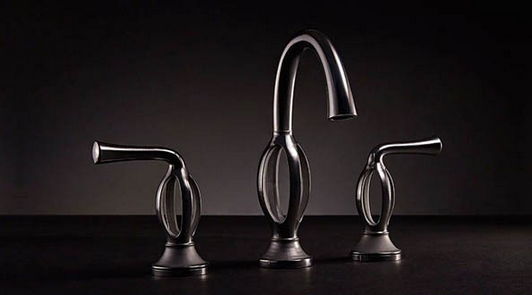
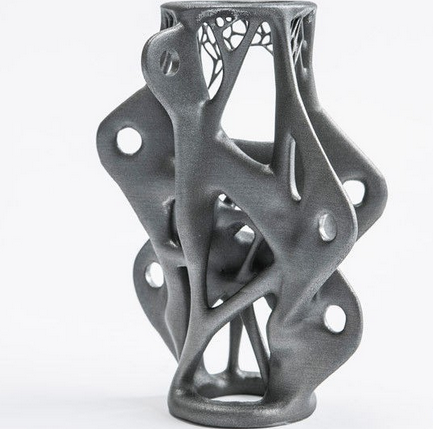
Metal objects printed using SLS technology (Source: desingnswan.com)
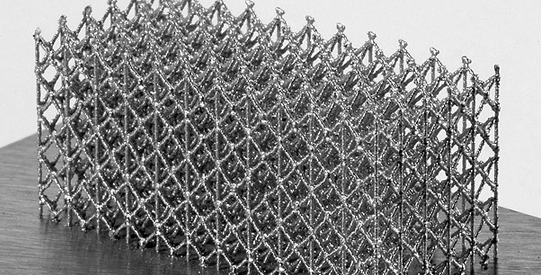
Metal artwork made with SLS technology (Source: Antarctic Bear)
At present, the products of the American DTM company formed by the SLS inventor Dechard have commercialized metal powder products as follows:
1. RrapidSteel1.0, whose material composition is 1080 carbon steel metal powder and polymer material. The polymer is evenly coated on the surface of the powder. The density of the preform is 55% of the steel density and the strength can reach 2.8 MPa. It can be pure copper or bronze. This material is mainly used to make injection molds.
2. RrapidSteel2.0, its sintered molded parts are completely compact, achieving the strength and hardness of aluminum alloy, can be machined, welded, surface treated and heat treated. It can be used as an injection molding mold for plastic parts. The life of injection mold can reach 100,000. Pieces/pairs can also be used to make die-casting molds for non-ferrous metal parts such as Al, Mg, Zn, etc. The life of the die-casting mold can reach 200-500 pieces/pair.
3. Copper Polyamide, the base material is copper powder, the bonding agent is polyamide (polyamide), which is characterized by no need for secondary sintering after molding. The molded parts can be used for injection molding of common plastics, and the service life is 100-400 pieces/pair.
In addition, there are materials such as DirectSteel (a steel powder mixed with other metal powders) introduced by EOS in Germany.
Eating is the most important thing for pets, and eating tools are also important. Various Bowls And Waterers appear to meet the habits of pets and the needs of owners.
Detachable Pet Bowl and brackets make cleaning and storage convenient.
A Dog Bowl With Stand, that is, a certain height, will protect the pet's spine when eating.
Automatic Pet Feeder and Pet Automatic Drinking can cultivate pets' habits of fixed-point and quantitative eating.
Outdoor portable feeders and water feeders are very necessary when owners take pets out.
Pet Runner Leaking Food Toy can increase the fun of pet eating, develop intelligence and increase intelligence in the process of playing.
Dog Slow Food Plate bowl is suitable for dogs, because dogs eat fast, which will cause gastrointestinal burden. Use the slow food bowl to slow down the dog's eating speed and achieve the purpose of healthy feeding.
And some derivatives, such as Accurate Measure Pet Food Spoon. Feed your pet quantitatively to avoid over eating and affecting the health of your pet.
The Pet Water Dispenser Filter ensures the quality of the water that pets drink and prevents pets from getting sick.
The Push-tube Type Pill Feeder is suitable for feeding pet cubs and feeding medicine.
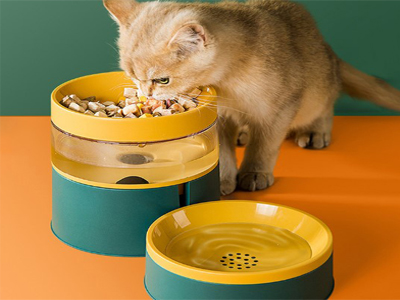
Bowls And Waterers,Push-Tube Type Pill Feeder,Non-Slip And Leak-Proof Dog Bowl,Dog Bowl With Stand
Mianyang Crossing Cross-Border E-Commerce Co., Ltd. , https://www.wycypets.com